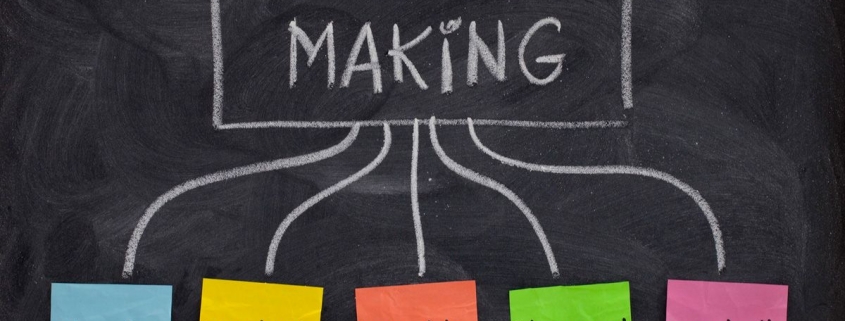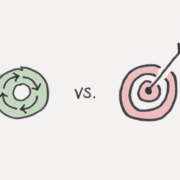Improving Decision-Making and Group Performance
Running a business is nothing more than making a series of important decisions. For a business owner or manager, each day is filled with decision-making, with some of those decisions likely meaning the difference between profit and loss. It can become stressful to make such important decisions day after day, especially if you are trying to make them all on your own.
In many cases, it will be better to make decisions as part of a group. When a group comes together to make an important choice, the company as a whole will enjoy several advantages. For one thing, the knowledge of all of the various people in the group will be used to make the choice, not just the knowledge of one individual. There are sure to be many different backgrounds and types of experiences within the group, which means great things for the quality of the final decision. Also, bad ideas tend to get filtered out in the group setting, meaning the eventual choice is less likely to be a dud.
With all of that said, group decision-making is not perfect. It can be tough to get everyone on the same page, meaning it may take quite a bit of time to make an eventual decision, even if that decision does wind up being a good one. To make the group decision making process run as smoothly as possible, you may wish to employ one of the methods outlined in the content below. We have identified a few methods for group decision making, so there is a good chance that one of these options will be right for your needs.
The Hoy-Tarter Model of Decision-Making
Originally created for use within a school system, the Hoy-Tarter Decision-Making Model can actually be applied in a number of different settings. If you are the owner or manager of any kind of organisation, you already know just how difficult it can be to make decisions. Specifically, it can be hard to decide how to make those decisions, in terms of who you should include, what you should consider in the process, and more. Making good decisions is a key to success in business, but you can only make good decisions if you have an appropriate process in place.
In this model, the main goal is to figure out exactly who should be included in the decision-making process. Different decisions are going to require different inputs from various people, so determining who should be included in making the decision (and who should be left out) is a key step not to be overlooked. Including the wrong people, or failing to include the right people, is a mistake that can have serious consequences.
If you decide to take a closer look at how to use this model, you will find that it requires you to create a matrix which will be filled with evaluations of expertise and whether or not an individual has a personal stake in the decision. It can take a bit of time to understand exactly how this model works, but it’s worth the effort because of its effectiveness.
Multi-Voting
If you would like to use voting to help make important organisational decisions from time to time, you may wish to employ the popular Multi-Voting Decision Making method. With this method, you can select the most popular options from a list in order to get an idea about the consensus of the group. Multi-voting is not always the right solution when trying to make a decision, but it can be perfect in specific circumstances.
If you would like to use the Multi-voting method, the first thing you need to do is develop a list of ideas that are going to be the subject of your vote. Ask the team that is working on this project to collaborate on a list. At first, you can put any idea that is presented onto the list, but you will want to slightly narrow down and ‘clean up’ that list before it goes to the vote. Before taking the vote, you will want to decide on exactly how many votes each individual is going to be given. Generally speaking, each person should be allowed to vote for roughly 1/3rd of the ideas on the list. So, given a list of 15 items, each person would be allowed to place five votes (thus the name ‘Multi-voting’). Of course, you are free to alter the number of votes allotted as you see fit, but the 1/3rd rule is a good place to start.
With all votes cast and collected, all you’ll need to do is count up the totals and determine the winning ideas. If you would like, you can narrow down the list of contenders and do the vote again, further concentrating your list to just a few of the strongest options. Multi-voting is the perfect way to gauge the opinion of a large group when several ideas are on the table.
Hartnett’s CODM Model
In this application, CODM stands for ‘consensus-oriented decision-making’, and that title tells you just about everything you need to know regarding the goal of this model. The idea here is to bring your group to a consensus as far as the best decision for the situation at hand. Once you have a group assembled that you are going to use to help make this important decision, Hartnett’s CODM Model calls for following through with a seven-step process. The seven steps are as follows:
- Framing the problem
- Having an open discussion
- Identifying Underlying Concerns
- Developing Proposals
- Choosing a direction
- Developing a preferred solution
- Closing
Regardless of the decision that needs to be made, this is a solid framework that you can use to walk through the process from start to finish. Of course, it may be necessary to tweak the model slightly in order to have it fit nicely with the needs of your organisation.
Delphi Technique
When a team truly struggles to reach a consensus for a major decision, you may need to step in and narrow down the options for them. The Delphi Technique takes all the ideas and compiles them for the manager of the group to break down into a smaller amount of possibilities. He or she then takes the remaining options back to the group for their consideration.
If the team continues to grapple over the resolution, the manager will condense the choices even further until they can make a decision. It gets easier for groups to reach an agreement when there are fewer outcomes available.
Rank the Possibilities
Rankings work for determining who is the best within sport leagues like the British Premier League and NFL, so why wouldn’t they work for a business as well? Whether you decide on an idea’s ranking by using a voting system or working as a team to prioritize them, it can be a great group decision making process for issues or questions that have many potential outcomes.
This technique can be organised through email, an online communication tool, or in a brief meeting. One specific way to determine how the possible scenarios should be ranked is by having everyone make a personal list of how they would rank them. Then, combine the lists and do some basic math to determine the average spot where each possibility should be represented.
By using one or more of these strategies in your business, you will see a dramatic increase in productivity and resolving issues among your team. Take a look at some of the upcoming choices your team will need to make soon and determine which of these tactics will be the most effective.
There are also numerous team-building activities you can do with your group to boost your team’s collaboration even further. Give these ideas a try and see if it makes your group decision making processes easier than ever before.
Given our current situation knowing that your colleagues or employees are best suited for this new scenario we find ourselves in. Finding the right talent, the best fit for the job and your organisation can be a very challenging task. It is now important to find out whether your managers or your team is well-equipped of working together from various locations. It requires deep knowledge of their personalities, strengths, weaknesses, interests, work style and other characteristics. Our technology and solutions will do the work for you, helping you discover if your people are resilient during times of hardship, if they are autonomous, if they are team players, without actual human contact. Given that our platform is cloud-based, everyone can use it from home as well. Humanity finds itself at a crossroad for various reasons now, why not help people discover and develop themselves from the comfort of their own homes?
Request a free demo:

Sources:
https://hbr.org/2020/09/7-strategies-for-better-group-decision-making
https://upraise.io/blog/group-decision-making-techniques/
https://airfocus.com/blog/guide-to-group-decision-making-techniques-tools/











